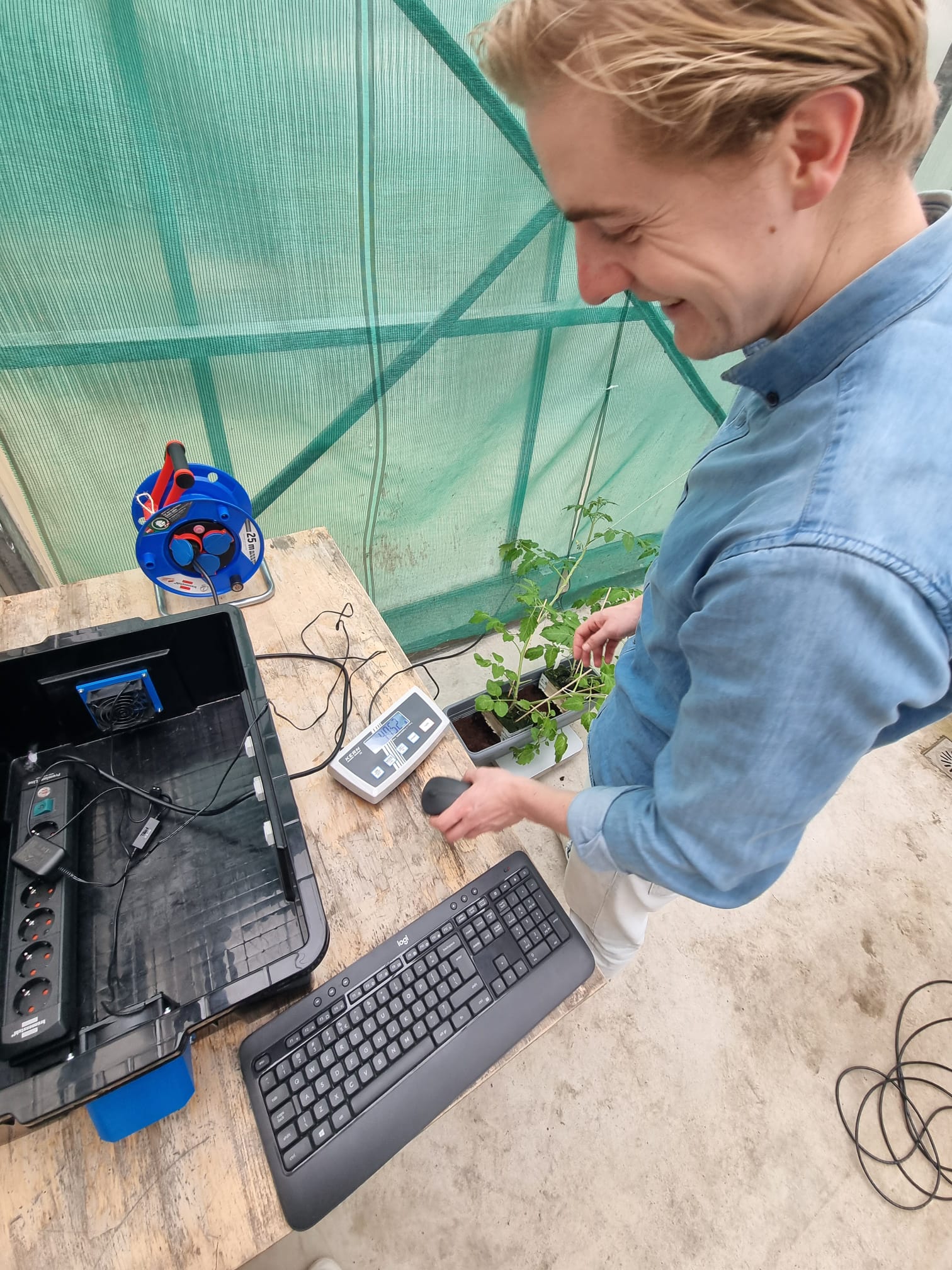Technological progress in recent years does not yet solve the labour shortage in greenhouse farming. The introduction of 5G is expected to accelerate innovation for sustainable food supply while stimulating more efficient cultivation. For instance, plant health is currently still mainly assessed by the human eye. Delft startup Plense Technologies wants to improve cultivation quality with their ultrasound sensors.
Duration
March – August 2024
Partners (TU Delft)
Do IoT Fieldlab, TU Delft, RoboHouse
Partners (other)
Growing healthy plants in the greenhouse entails a lot. Until the point of harvest, the plant is closely monitored, often by employees who assess the plant’s condition based on experience. Plense wants to help automate these checks. A sensor that records ultrasound (sound inaudible to humans) charts what a plant needs. The data collected by the sensors is comprehensively displayed to the grower. This allows a grower to monitor the health of his crops and make adjustments where necessary. Complementing manual and visual checks, this will ensure a more ‘high-tech’ driven crop in the future.

This is how it works
Plense is able to listen to the flow of moisture in a plant. Small microphones capture the acoustic sound a plant makes. Sensors measure the aquiferous arteries (xylem vessels) of plants. The sensor sends ultrasound waves into the plant’s stem using a speaker and subsequently captures them with a microphone. The composition of the plant’s internal structure changes when the plant warms up, perspires or reacts to its environment. These changes also affect the sound waves passing through the plant. Plense translates these alterations in vibrations by means of algorithms, which are eventually converted into data, information and actions.
This allows a grower to understand what crops need. Think of the moisture level, the substrate (the soil from which the plant gets nutrients) and the microclimate around the plant. In addition, one can also measure how a plant responds to changes in the cultivation process. All this information combined will help growers to make more informed and data-driven decisions in the future.
Possibilities of 5G
So far, the sensors used by Plense were physically connected to a computer because wireless data communication does not function well in a greenhouse. Due to the combination of the type of construction (glass with metal) and the plants themselves (which are an obstacle to data transmission), connections such as Bluetooth and Wi-Fi do not work properly.
This experiment focuses on testing a 5G connection in combination with the sensors. One of the research lines focuses on processing data in the cloud. Currently, the amount of data coming from the sensors is still low, but is expected to increase in the future. Fast data transfer will become essential for plant monitoring. For these applications, 5G does offer possibilities for wireless, lightning-fast exchange of large amounts of data in a greenhouse in a safe and reliable way. The energy consumption is also lower, which makes it interesting for growers when the number of sensors in the greenhouse increases.
In this study, Plense is conducting tests at two locations. The first phase takes place at the TU Delft fieldlab RoboHouse. With a small test layout, the technology is first tested and set up, including calibrating the sensor. The second part of the research involves scaling up at Tomatoworld, where experiments with 5G in a fully functional greenhouse are possible.
